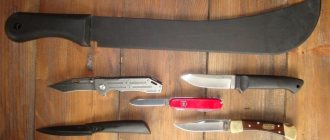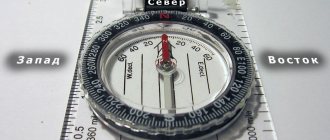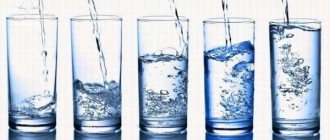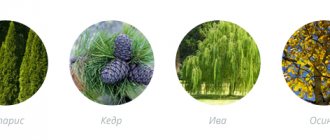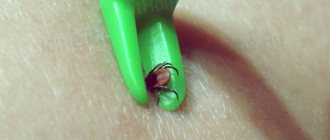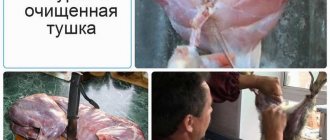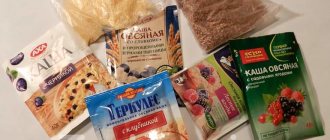Knife sharpening is a classic skill for brutal action heroes who need to keep their blade sharp and deadly at all times. In our case, the ability to sharpen a knife will be useful, rather, to properly cut cheese and sausage for a delicious sandwich. That’s why it’s time to tell you how to properly sharpen knives with a whetstone by hand, so as not to fall into despair when at some point your tool cannot cope with a loaf of bread.
It is also useful for hunters and collectors of bladed weapons to know how to sharpen a knife. In everyday life, they more often than others resort to using blades, which are their passion or a tool for cutting up innocent animals.
Be that as it may, today there are many devices for sharpening knives, which include complex electrical appliances, Japanese water stones, ordinary ceramic dishes and, of course, the good old whetstone.
If you've never tried sharpening a knife, don't be surprised that you might not be very good at it the first time. Here, as in any matter, skill and practice are required.
How do you know when it's time to sharpen your knife?
Every knife, even if it is made of first-class metal with maximum strength, may one day have a dull blade. To understand that it needs to be refreshed, you need to do a basic check. For example, using the following three methods.
- Take a hemp rope, fold it four times and try to cut it with a knife. If everything worked out, then the blade does not need sharpening yet. If the rope remains intact, it’s time to take out the tools.
- If you have a needle file (miniature file) at home, run it along the blade of the knife. If, with strong pressure, the blade scratches the surface, and with weak pressure, it slides, then everything is in order.
- If you have neither rope nor a file, the classic method with paper will come to the rescue. Take a regular A4 sheet, fold it and try to cut it on the fold with a knife. If the blade slides smoothly and without much effort, then the knife does not need to be sharpened. Otherwise, it's time to get down to business.
- Try cutting a tomato. Doesn't it cut and turns into tomato paste? This means your knife has been in need of sharpening for a long time.
What to sharpen with? We are considering options
There are many tools for sharpening knives, ranging from electric ones to regular whetstones, which are very inexpensive.
Electric sharpeners
Electric sharpeners have two big disadvantages: the expensive price (around 10,000 rubles) and the ability to remove steel heavily during sharpening, which leads to rapid wear of the knife.
But the process is fast, fully automated and there is no need to manually maintain the degree of inclination when sharpening.
How to sharpen a knife on a sharpener is usually written in the instructions that come with the device.
Musat
Musat is a good thing, but it won’t sharpen a very dull knife, since it is mainly intended for straightening. And the effect of such sharpening lasts for a couple of days at most.
How to sharpen a knife with musat is shown schematically here:
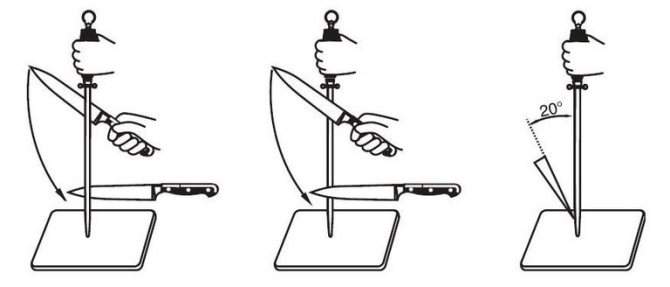
Roller blade
Not a bad option for women. Just a couple of movements on the rollers and the knife cuts well (but not for long). They are inexpensive and everyone can afford them.
Sandpaper
Sharpeners are skeptical about using sandpaper for these purposes. But the practice of those who use it convinces us that this is a completely acceptable option.
This is not to say that it is the most comfortable, but if you don’t have anything at hand, and you need to sharpen the knife urgently, then you can use sandpaper. Moreover, the article is not for masters, but for amateurs.
Sandpaper strips must be secured to any wooden base (in the form of a block) using tape. On the one hand - the coarse-grained fraction, on the other - the fine-grained fraction.
Ceramic bar
It’s not worth talking about the price here, since they are very cheap. The main thing is to choose it correctly so that you can sharpen it comfortably later.
You need two bars. One with a rougher surface (320 grit), for basic sharpening and edge angle correction, and the second for surface grinding (1000 grit).
The length of the stone should be approximately the same as the longest knife in the house.
Width – the wider, the more convenient it is to work with it. You can read how to sharpen knives with a whetstone below, in a separate block.
Diamond block
Diamond bars don’t cost five kopecks, but the result cannot be compared with an ordinary stone. It’s more comfortable to work with, and it’s also more durable.
It consists of a plastic or aluminum base, onto which two metal plates coated with diamond grains are attached.
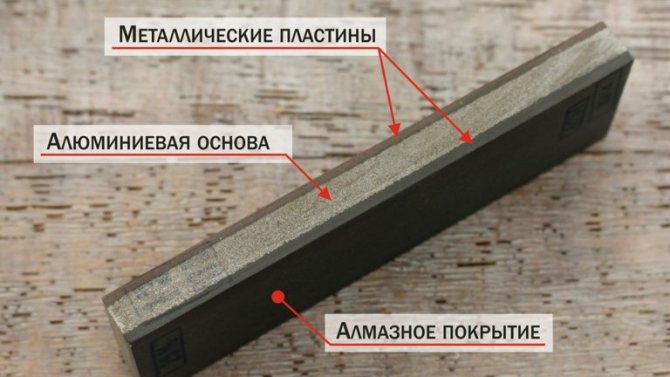
Such bars do not wear off like ceramic ones and even after repeated sharpening they remain smooth, rectangular in shape with sharp corners.
In addition to all these advantages, there are also advantages:
- They are not afraid of impact and will not break if accidentally dropped
- The diamond block is not clogged with steel particles. After sharpening, you only need to rinse it lightly under water and wipe it clean.
- The sharpening process on diamond stones is very fast, which means that the stone will serve you for a very long time, as it hardly wears down
- You don't need to buy two bars, as they are made in such a way that one side is rough and the other is for sanding.
There is only one drawback to diamond stones – the price. They are not cheaper than 800 rubles, and if they are, then they are clearly a fake, which will become unusable after five sharpenings.
Japanese water stones
A water stone is also a block. But it should not be used dry, but moistened with water.
During the friction process, a suspension is formed, which simultaneously with sharpening polishes the surface.
They are not cheap, but they wear out quite quickly. So, for simple kitchen knives this is not the best choice.
Sharpening using an abrasive wheel on a drill or machine
You should not do this if this is your first time sharpening a knife.
A couple of seconds is enough to cause irreparable harm. Moreover, in this case the steel gets too hot and it is necessary to cool it during the process, and if this is not done, the edge may crumble.
How to properly sharpen knives on a machine is the topic of a separate and extensive article, therefore, we will not focus on this here.
Also be sure to watch this video, it is very on topic.
Since, in this matter, it is better to see once than to hear a hundred times!
How to sharpen a knife at home with a whetstone and other tools
So, let's move directly to the sharpening technology itself, which requires some effort.
First of all, you need to take a whetstone and dip it in oil or water for 15 minutes. This is necessary so that small particles of steel do not accumulate between the grains of the stone, which ultimately leads to the unsuitability of the whetstone.
We will begin sharpening the knife from the coarse-grained side of the block. The most important thing here is to correctly position the blade relative to the surface of the whetstone. The result of our efforts largely depends on this.
Experienced knife sharpeners advise positioning the blade at an angle of 20 degrees to the block. However, this inclination can be changed depending on the type of knife.
- Fillet and chef's knives are sharpened at an angle of 25 degrees;
- Japanese kitchen knives require an inclination of 10-20 degrees;
- Hunting blades and blades are sharpened at an angle of 30-45 degrees;
- Regular kitchen knives require approximately 30 degrees of sharpening;
- Straight razors are sharpened at an angle of 10-15 degrees.
The sharpening angle directly affects the final sharpness of the knife. That is, if you want your blade to be incredibly sharp, you need a sharper angle. However, for greater knife strength and resistance to dulling, it is best to increase the sharpening angle.
The knife must be sharpened with smooth and continuous movements, slightly lifting the handle when the process reaches the bend of the blade. It is also worth remembering that the blade must be guided so that the direction of movement is perpendicular to the cutting edge.
You should also not put too much pressure on the blade, in the hope that it will sharpen better and faster. However, even if the movements are too soft, there will be no effect. Here you need to maintain balance and maintain optimal impulse on the bar.
The blade should be sharpened until a noticeable burr is felt on the back of it. In this case, you need to start sharpening the back side of the blade and reach the stage when the blade is smooth and even.
Dependence of the sharpening method on the steel grade
Not all sharpening methods are equally suitable for different grades of steel. For example, very popular knives made of Damascus steel cannot be sharpened on electric machines, since it has a non-uniform structure. It consists of alternating soft and hard layers, so the blade must be sharpened with extreme care, otherwise the edge of the blade will become ribbed and will crumble in the future. Knives made of this steel should be sharpened by hand, gradually changing the grain size of the stones towards a smaller size.
Bulat steel is characterized by increased hardness. Knives made from it need to be sharpened for a long time. In this case, electrical and mechanical machines are often used. You need to start with coarse-grained stones moistened with water, gradually moving towards fine-grained ones.
It should be noted that with the automated sharpening method it is not possible to achieve the sharpness and accuracy that is provided by manual work. The main advantage is the speed of this process.
Handmade hunting knives require a special approach when sharpening the blade, as they can be made from non-standard grades of steel. Therefore, it is recommended to sharpen them manually.
We conclude: proper sharpening of hunting knives is a very important process for maintaining appearance and durability. This hunting prop should be used only for its intended purpose and remember to keep it clean, periodically lubricating it with oil (both blades and wooden handles) to prevent loss of shine and drying out.
Grinding Features
Grinding technology is used at the initial stage of sharpening a blade, if the blade is severely dull, noticeably rusty, or has received chips or other mechanical damage. This is a stage that requires the removal of significant layers of metal. Manual grinding is a labor-intensive and troublesome task. Consider turning to a professional. If you cannot use the services of a professional, it makes sense to use a power tool, for example, a circular grinder. Choose a coarse-grained diamond sandpaper that is as aggressive as possible to the metal of the blade. If, for lack of other options, you are forced to grind your kitchen or household knife by hand using a diamond stone, then at least wash the stone with Fairy dishwashing detergent before work. The work will go better.
What problems arise when sharpening a knife?
When using the most popular method of sharpening kitchen and household knives - sharpening with a diamond stone - there is a danger of “oversharpening” the knife. This danger is due to the fact that the diamond stone is very “corrosive”; it removes metal, especially from a soft blade, in thick layers. Just a few careless movements - and it turns out that you should have stopped earlier, and now you need to start sharpening again. This leads to unnecessary effort, useless grinding of the blade and excessive consumption of abrasive.
Selecting a whetstone
The most important sharpening item is the whetstone. To professionally sharpen knives, you need to purchase several stones with different grain sizes. For razor sharpness, use up to five different whetstones.
Sharpeners come in the following types:
- Artificial. They are needed for initial sharpening. Such bars are made from synthetic abrasive stones.
- Natural. Used for final processing. Diamond, corundum, garnet, and Japanese water stone are used to make them.
If you compare the bars by cost, then natural ones are much more expensive than artificial ones, but the result deserves it. It is also necessary to choose the correct size of the stone: it should be the same length as the blade that requires sharpening, or approximately 2 times larger in size.
As for the width, it does not play a significant role and it can be anything. But if you take into account that a beginner will have to sharpen a knife, then it is better to choose a block of larger width; in the future it will be easier for them to work.
Immediately before the sharpening process, you need to wet the stone in liquid. If it is an artificial bar, then in water, but if it is natural, then in oil. This procedure is carried out to close the pores in the stone to reduce the risk of contamination.
A block made from natural stones has many advantages, the main one being the large grain. It allows you to quickly sharpen the blade, making it sharp without any unevenness. Also from natural material, but with the addition of synthetic stones, bars with medium and fine grain are produced.
The water-wet bar comes in a variety of shapes to suit specific knives. It comes in several types: fine, coarse or medium.
Sharpeners made using diamond chips mounted in a plastic base are considered to be one of the most durable products. They are made with coarse grains, extremely coarse and fine.
